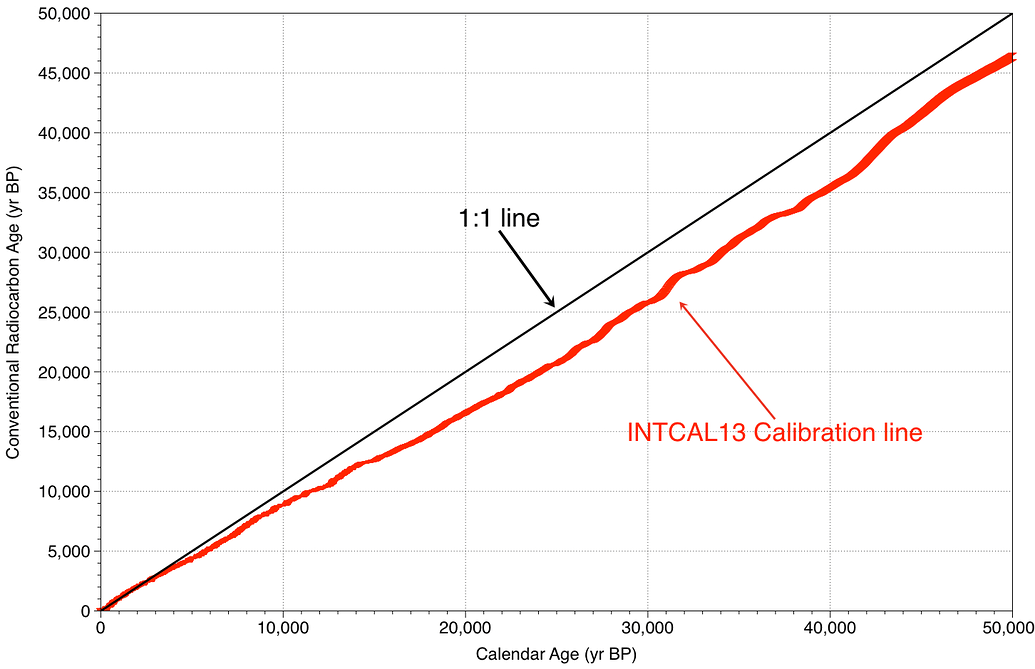

The 129.4 g remaining is just a bit larger than one-eighth, which is sensible given a half-life of just over 20 min.

As a result, one would expect the amount of sample remaining to be approximately one eighth of the original amount.
Carbon 14 dating calculator full#
(b) One hour is nearly three full half-lives of the carbon-11 nucleus. The decay of carbon-11 allows it to be used in positron emission topography (PET) scans however, its 20.334 min half-life does pose challenges for its administration. Another way of considering the decay constant is that a given carbon-11 nuclei has a 0.0568 percent probability of decaying each second. (a) The decay constant shows that 0.0568 percent of the nuclei in a carbon-11 sample will decay each second. All three laboratories found samples of the shroud contain 92 percent of the 14 C 14 C found in living tissues, allowing the shroud to be dated (see How Old is the Shroud of Turin?). Samples were tested at three independent laboratories, each being given four pieces of cloth, with only one unidentified piece from the shroud, to avoid prejudice. Carbon-14 dating was not performed on the shroud until 1988, when the process had been refined to the point where only a small amount of material needed to be destroyed. As a result, the relic has been remained controversial throughout the centuries. Its remarkable negative imprint of an apparently crucified body resembles the then-accepted image of Jesus. This relic was first displayed in Turin in 1354 and was denounced as a fraud at that time by a French bishop. One of the most famous cases of carbon-14 dating involves the Shroud of Turin, a long piece of fabric purported to be the burial shroud of Jesus (see Figure 22.25). Carbon-14 dating can be used for biological tissues as old as 50 or 60 thousand years, but is most accurate for younger samples, since the abundance of 14 C 14 C nuclei in them is greater. By comparing the abundance of 14 C 14 C in an artifact, such as mummy wrappings, with the normal abundance in living tissue, it is possible to determine the artifact’s age (or time since death). When an organism dies, carbon exchange with the environment ceases, and 14 C 14 C is not replenished. Over time, carbon-14 will naturally decay back to 14 N 14 N with a half-life of 5,730 years (note that this is an example of beta decay). Carbon-14 has an abundance of 1.3 parts per trillion of normal carbon, so if you know the number of carbon nuclei in an object (perhaps determined by mass and Avogadro’s number), you can multiply that number by 1.3 × 10 − 12 1.3 × 10 − 12 to find the number of 14 C 14 C nuclei within the object. Radioactive carbon has the same chemistry as stable carbon, and so it mixes into the biosphere, where it is consumed and becomes part of every living organism. Carbon-14 is an isotope of carbon that is produced when solar neutrinos strike 14 N 14 N particles within the atmosphere. Its most familiar application is carbon-14 dating. Radioactive dating or radiometric dating is a clever use of naturally occurring radioactivity. Show that carbon-14 can create nitrogen-14 when struck by neutrino in the atmosphere. Nuclear decay is an example of a purely statistical process.

Therefore, the number of radioactive nuclei decreases from N to N / 2 in one half-life, to N / 4 in the next, to N / 8 in the next, and so on. Then, half of that amount in turn decays in the following half-life. After one half-life passes, half of the remaining nuclei will decay in the next half-life. The time in which half of the original number of nuclei decay is defined as the half-life, t 1 2 t 1 2. Why do we use the term like half-life rather than lifetime? The answer can be found by examining Figure 22.24, which shows how the number of radioactive nuclei in a sample decreases with time.

Here we will explore half-life and activity, the quantitative terms for lifetime and rate of decay. That means they have shorter lifetimes, producing a greater rate of decay. For example, radium and polonium, discovered by Marie and Pierre Curie, decay faster than uranium. However, some nuclides decay faster than others. Half-Life and the Rate of Radioactive Decay


 0 kommentar(er)
0 kommentar(er)
